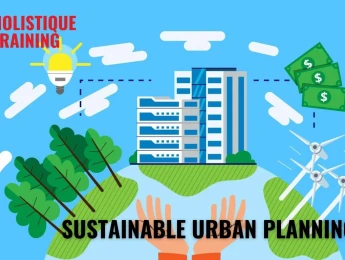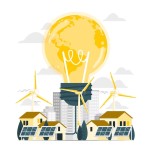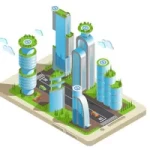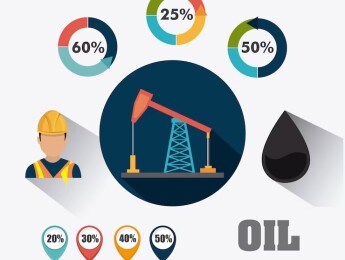- Table of Contents
- Introduction
- What is Sustainable Urban Planning?
- Characteristics of a Sustainable Urban Plan
- Integration of Land Use and Transportation
- Environmental Conservation
- Social Equity and Inclusivity
- Economic Viability and Resilience
- Cultural Preservation and Identity
- Innovation and Adaptability
- 8 Key Benefits of Sustainable Urban Planning
- 1. Improved Quality of Life
- 2. Environmental Preservation
- 3. Economic Growth and Job Creation
- 4. Resilience to Climate Change
- 5. Social Inclusivity and Equity
- 6. Reduced Infrastructure Costs
- 7. Enhanced Urban Aesthetics and Livability
- 8. Long-term Cost Savings and Investment Returns
- Strategies to Create Sustainable Urban Areas
- Environmental Development
- Water Conservation
- Energy Conservation
- Green Spaces
- Social Development
- Economic Development
- Innovation and Collaboration
- Table: Technologies that Expedite the Process of Sustainable Urban Planning
- Examples of Sustainable Urban Planning from Cities Around the World
- 1. Copenhagen, Denmark - Bicycle-Friendly Infrastructure
- 2. Curitiba, Brazil - Integrated Bus Rapid Transit (BRT) System
- 3. Vancouver, Canada - Green Building and Urban Design
- 4. Freiburg, Germany - Sustainable Neighbourhoods
- 5. Singapore - Smart City Innovations
- 6. Portland, United States - Urban Green Spaces and Active Transportation
- 7. Songdo, South Korea - Greenfield Smart City
- 8. Masdar City, UAE - Net-Zero Carbon Community
- In Conclusion
Introduction
Sustainable urban planning is not just a concept but a necessity in today's rapidly urbanising world. It involves designing cities to meet the needs of current generations without compromising the ability of future generations to meet their own needs. This approach integrates various aspects of development—environmental, social, and economic—to create livable, resilient, and vibrant urban areas. This comprehensive guide delves into sustainable urban planning, its benefits, effective strategies, and inspiring examples from cities worldwide.
What is Sustainable Urban Planning?
Sustainable urban planning involves creating cities prioritising environmental sustainability, social inclusivity, and economic viability. It aims to minimise urban areas' ecological footprint while maximising their efficiency and livability. This approach considers long-term impacts on resources, climate, and quality of life, aiming for balance and harmony between urban development and natural ecosystems.
Characteristics of a Sustainable Urban Plan
A sustainable urban plan serves as a blueprint for cities to achieve balance and resilience in the face of urbanisation pressures and environmental challenges. It encompasses a range of interconnected characteristics that collectively promote sustainable development, enhance quality of life, and ensure long-term viability. Here, we delve deeper into the key characteristics that define a robust, sustainable urban plan.
Integration of Land Use and Transportation
Integrating land use and transportation systems is central to sustainable urban planning. This involves designing cities strategically located in residential, commercial, and recreational areas to minimise commuting distances and promote mixed-use development. By reducing urban sprawl and encouraging compact, walkable neighbourhoods, cities can lower carbon emissions, decrease traffic congestion, and improve air quality. Integrated public transit systems, including buses, light rail, and bike-sharing programs, further support sustainable mobility options, reducing reliance on private vehicles and fostering community connectivity.
Environmental Conservation
Preserving natural resources and minimising environmental impact are fundamental pillars of sustainable urban planning. Cities adopt green infrastructure strategies such as green roofs, permeable pavements, and urban forests to manage stormwater runoff, improve air quality, and mitigate the urban heat island effect. Sustainable building practices, including energy-efficient design, passive solar heating, and use of renewable materials, contribute to reduced energy consumption and carbon emissions. Moreover, initiatives like waste recycling programs and sustainable procurement policies help cities achieve resource efficiency and minimise landfill waste, promoting a circular economy approach to urban development.
Social Equity and Inclusivity
A sustainable urban plan prioritises social equity by ensuring equitable access to essential services, housing, and recreational amenities for all residents. This involves designing neighbourhoods accommodating diverse socioeconomic groups and promoting affordable housing options close to employment centres and public transit. Inclusive urban design features such as barrier-free pedestrian pathways, accessible public spaces, and universal design principles cater to residents of all ages and abilities, fostering a sense of community and enhancing social cohesion. Additionally, participatory planning processes that engage stakeholders from marginalised communities empower residents to voice their needs and aspirations, ensuring that urban development initiatives reflect the broader interests of the population.
Economic Viability and Resilience
Economic sustainability forms a cornerstone of sustainable urban planning, driving local economic growth, job creation, and investment in green industries. Cities leverage incentives for green building certifications, renewable energy projects, and sustainable business practices to attract private sector investment and stimulate innovation. Strategic land use planning that supports mixed-use developments and vibrant commercial districts enhances the economic vitality of urban areas while generating revenue for municipal services and infrastructure maintenance. Furthermore, resilience to economic shocks and climate change impacts is achieved through diversified local economies, adaptive infrastructure systems, and proactive disaster preparedness strategies, ensuring long-term stability and prosperity for urban residents and businesses alike.
Cultural Preservation and Identity
Sustainable urban planning acknowledges the importance of preserving cultural heritage and fostering local identity within rapidly evolving urban landscapes. Cities integrate historic preservation guidelines, adaptive reuse policies, and cultural heritage conservation initiatives to safeguard significant landmarks and traditions. Urban design incorporating local art, architecture, and public spaces celebrates community diversity and promotes cultural expression, enriching the urban fabric and enhancing residents' sense of place. By valuing cultural authenticity and heritage conservation, cities create inclusive environments that honour past achievements while embracing future sustainable growth and development opportunities.
Innovation and Adaptability
Adaptability and innovation are essential characteristics of sustainable urban planning, enabling cities to respond effectively to evolving environmental, social, and economic challenges. Cities embrace smart technologies, data-driven decision-making , and collaborative partnerships to optimise resource management, enhance service delivery, and improve urban resilience. Innovations in sustainable infrastructure, such as green energy microgrids, smart grid systems, and decentralised water treatment facilities, support climate adaptation strategies and reduce dependency on centralised utilities. Moreover, adaptive planning frameworks that anticipate future trends and scenarios enable cities to proactively address emerging issues, ensuring flexibility and responsiveness in achieving long-term sustainability goals.
In short, a sustainable urban plan represents a holistic approach to urban development that harmonises environmental stewardship, social equity, economic vitality, and cultural preservation. By integrating these key characteristics into urban planning frameworks, cities can create inclusive, resilient, and vibrant communities that thrive in harmony with nature and accommodate the diverse needs of their residents. As cities continue to grow and evolve, embracing sustainable practices and innovative solutions will be essential in shaping a sustainable urban future that promotes prosperity, well-being, and quality of life for future generations.
8 Key Benefits of Sustainable Urban Planning
According to the World Economic Forum , currently, 56.2% of the world's population resides in urban areas. Implementing sustainable urban planning practices yields a myriad of benefits that enhance the quality of life for residents of these areas, promote economic prosperity, and safeguard the environment. These benefits underscore the importance of adopting holistic approaches to urban development that prioritise sustainability across environmental, social, and economic dimensions. Here’s a detailed exploration of the key advantages:
1. Improved Quality of Life
Sustainable urban planning fosters healthier and more livable cities by prioritising clean air, safe drinking water, and access to green spaces. Reduced air pollution from fewer vehicles and energy-efficient buildings contributes to lower rates of respiratory illnesses and improved public health outcomes. Well-designed urban green spaces, such as parks and community gardens, provide recreational opportunities, reduce stress levels, and enhance overall well-being. Additionally, pedestrian-friendly streets and bike lanes promote physical activity, reducing obesity rates and promoting healthier lifestyles among residents.
2. Environmental Preservation
Cities embracing sustainable urban planning practices significantly reduce their ecological footprint by minimising resource consumption and environmental degradation. Green building standards, including energy-efficient designs and sustainable materials, lower energy demands and greenhouse gas emissions associated with construction and operation. Implementing green infrastructure, such as green roofs and rain gardens, mitigates stormwater runoff, improves water quality, and protects local waterways and ecosystems. Preserving natural habitats and biodiversity through urban green spaces and conservation initiatives enhances urban resilience to climate change impacts and supports wildlife populations.
3. Economic Growth and Job Creation
Investments in sustainable urban infrastructure and green technologies stimulate local economies and create new job opportunities in emerging sectors. The development of renewable energy projects, such as solar and wind farms, generates manufacturing, installation, and maintenance jobs while reducing dependency on fossil fuels and promoting energy independence. Sustainable building practices, including retrofitting existing structures for energy efficiency and incorporating sustainable materials, spur demand for skilled labour and construction services. Furthermore, vibrant urban districts with accessible public transit and walkable amenities attract businesses, residents, and tourists, boosting local commerce and real estate values.
4. Resilience to Climate Change
Cities prioritising sustainability are better equipped to withstand and adapt to climate change impacts, such as extreme weather events and rising sea levels. Investment in resilient infrastructure, including flood barriers and green stormwater management systems, reduces vulnerability to flooding and water shortages. Adaptive planning strategies, such as urban heat island mitigation through green roofs and reflective surfaces, enhance urban resilience and minimise heat-related health risks during heat waves. Promoting sustainable transportation options, such as electric vehicles and bike-sharing programs, reduces carbon emissions and mitigates climate impacts while improving air quality and public health outcomes.
5. Social Inclusivity and Equity
Sustainable urban planning promotes social equity by ensuring equitable access to essential services, affordable housing, and cultural amenities for all residents, regardless of socioeconomic status or background. Developing mixed-income housing and transit-oriented developments near public transit hubs improves housing affordability and reduces transportation costs for low-income households. Inclusive community engagement processes, including participatory planning and decision-making, empower marginalised communities to voice their needs and priorities in urban development projects. Furthermore, creating accessible public spaces, pedestrian-friendly streets, and universal design principles fosters social cohesion and enhances community resilience in the face of social and economic challenges.
6. Reduced Infrastructure Costs
Long-term cost savings are achieved through sustainable urban planning practices prioritising resource efficiency, minimising waste, and optimising infrastructure investments. Energy-efficient buildings and green infrastructure systems, such as permeable pavements and bioswales, reduce operational costs associated with water and energy consumption, maintenance, and repairs. Investment in smart technologies, including energy management systems and real-time data analytics, improves infrastructure efficiency and responsiveness while reducing long-term maintenance costs. Additionally, strategic land use planning and compact city design minimise infrastructure expansion and transportation infrastructure costs, optimising municipal budgets and enhancing fiscal sustainability.
7. Enhanced Urban Aesthetics and Livability
Integrating green spaces, urban forests, and pedestrian-friendly streetscapes enhances cities' visual appeal and livability, creating attractive environments that promote community pride and cultural identity. Developing urban parks, green corridors, and public art installations improves urban aesthetics and provides residents with opportunities for recreation, relaxation, and cultural enrichment. Preserving historic landmarks and architectural heritage through adaptive reuse and restoration projects enhances the sense of place and connects residents to their city's rich cultural heritage. Additionally, the promotion of mixed-use developments and vibrant commercial districts supports local businesses and enhances retail diversity, contributing to a dynamic urban fabric that attracts residents and visitors alike.
8. Long-term Cost Savings and Investment Returns
Investments in sustainable urban planning yield significant long-term cost savings and return on investment through reduced energy consumption, lower healthcare costs, increased property values, and enhanced economic productivity. Energy-efficient buildings and renewable energy systems lower utility bills and operational expenses for businesses and residents, improving affordability and financial stability. Green infrastructure investments, such as stormwater management systems and urban green spaces, reduce flood risks and property damage during extreme weather events, minimising insurance claims and disaster recovery costs. Moreover, sustainable urban planning strategies attract private sector investment in green technologies and sustainable development projects, creating new business opportunities and strengthening economic competitiveness in global markets.
In summary, sustainable urban planning offers multifaceted benefits that promote environmental stewardship, social equity, economic prosperity, and cultural preservation within cities. By adopting integrated approaches to urban development that prioritise sustainability across environmental, social, and economic dimensions, cities can create resilient, vibrant, and inclusive communities that enhance quality of life and ensure a sustainable future for future generations. Through collaborative partnerships, innovative solutions, and proactive planning, cities can navigate complex urban challenges and achieve sustainable development goals that benefit residents, businesses, and the environment alike.
Strategies to Create Sustainable Urban Areas
Creating sustainable urban areas requires a comprehensive approach integrating innovative strategies across environmental, social, and economic dimensions. These strategies aim to enhance urban resilience, promote resource efficiency, and improve the quality of life for residents. Here’s a detailed exploration of effective strategies for sustainable urban planning:
Environmental Development
- Green Building Standards: Implementing stringent green building codes and certifications promotes energy efficiency, reduces carbon emissions, and improves indoor air quality. Strategies include passive solar design, efficient insulation, and the use of sustainable materials.
- Renewable Energy Use: Encouraging the adoption of renewable energy sources such as solar, wind, and geothermal power reduces reliance on fossil fuels and mitigates greenhouse gas emissions. Incentives for renewable energy installations and community solar projects promote local energy production and resilience.
- Urban Greening: Enhancing urban green spaces through parks, green roofs, and vertical gardens improves air quality, reduces urban heat island effects, and provides habitats for biodiversity. Green infrastructure, such as bioswales and rain gardens, manages stormwater runoff and promotes water conservation.
Water Conservation
- Water-Efficient Technologies: Water-saving technologies like low-flow fixtures, dual-flush toilets, and smart irrigation systems reduce water consumption and wastewater generation. Rainwater harvesting systems and greywater reuse initiatives further enhance water conservation efforts.
- Natural Water Systems Restoration: Restoring natural water systems such as wetlands, rivers, and coastal zones enhances water quality, supports biodiversity, and mitigates flood risks.Sustainable urban drainage systems (SUDS) integrate natural water management techniques into urban planning to improve resilience to climate change impacts.
Energy Conservation
- Energy-Efficient Transportation: Developing and promoting sustainable transportation options such as electric vehicles, bike-sharing programs, and efficient public transit systems reduces traffic congestion, air pollution, and greenhouse gas emissions. Transit-oriented development (TOD) encourages compact, mixed-use developments near transit hubs to minimise car dependency.
- Smart Grid Technologies: Implementing smart grid technologies and energy management systems optimises energy distribution, improves grid reliability, and enables demand-response strategies. Energy-efficient street lighting, building automation systems, and district heating and cooling networks further reduce energy consumption and operational costs.
Green Spaces
- Urban Parks and Green Corridors: Designing and preserving urban parks, green corridors, and recreational spaces enhances urban biodiversity, provides opportunities for outdoor recreation, and improves mental health and well-being among residents. Community gardens and urban agriculture initiatives promote local food production and food security.
Social Development
- Affordable Housing: Integrating affordable housing options within mixed-income neighbourhoods near public transit and amenities ensures equitable access to housing opportunities and reduces socio-economic disparities. Inclusive zoning policies and housing subsidies support affordable housing development and tenant protection measures.
- Healthcare and Education Access: Enhancing access to healthcare facilities, schools, and community centres promotes community well-being and social cohesion. Universal design principles in public spaces and buildings ensure accessibility for people of all ages and abilities.
Economic Development
- Green Jobs Creation: Investing in green industries such as renewable energy, sustainable construction, and environmental technology generates job opportunities, stimulates local economies, and attracts skilled labour and innovative entrepreneurs. Green business incentives and workforce development programs support job training and career advancement in sustainable sectors.
- Local Business Support: Promoting local businesses, markets, and cultural institutions strengthens community resilience, preserves cultural heritage, and enhances neighbourhood vitality. Business improvement districts (BIDs) and small business grants encourage entrepreneurship and economic diversity.
Innovation and Collaboration
- Data-Driven Decision Making: Urban analytics, data visualisation tools, and geographic information systems (GIS) inform evidence-based planning and policy-making decisions. Open data platforms and citizen engagement technologies enable transparent governance and community participation in urban development processes.
- Public-Private Partnerships: Collaborating with private sector stakeholders, academic institutions, and non-profit organisations fosters innovation, leverages resources, and promotes knowledge-sharing in sustainable urban planning initiatives. Public-private partnerships (PPP) facilitate financing mechanisms for infrastructure projects and sustainable development ventures.
In short, creating sustainable urban areas requires a coordinated and innovative approach that integrates environmental conservation, social equity, and economic development strategies. By adopting these comprehensive strategies, cities can enhance urban resilience, improve resource efficiency, and foster inclusive and vibrant communities for residents. Through collaborative partnerships, data-driven decision-making, and community engagement, cities can achieve sustainable development goals that promote environmental stewardship, economic prosperity, and quality of life for future generations.
Technology | Description |
Smart Grid Systems | Optimizes energy distribution. |
Green Building Technologies | Enhances energy efficiency. |
Integrated Transportation Systems | Improves urban mobility. |
IoT for Urban Monitoring | Real-time data for decision-making. |
Renewable Energy Integration | Reduces reliance on fossil fuels. |
Table: Technologies that Expedite the Process of Sustainable Urban Planning
Examples of Sustainable Urban Planning from Cities Around the World
Cities worldwide are pioneering innovative approaches to sustainable urban planning, setting benchmarks for environmental stewardship, social inclusivity, and economic resilience. These examples highlight successful initiatives that address diverse urban challenges while promoting sustainability and enhancing the quality of life for residents. Here are notable examples from different cities:
1. Copenhagen, Denmark - Bicycle-Friendly Infrastructure
Copenhagen is renowned for its extensive bicycle lanes and pedestrian-friendly streets, promoting sustainable transportation and reducing carbon emissions. The city's commitment to cycling infrastructure includes dedicated bike lanes, bicycle parking facilities, and traffic signals prioritising cyclists. According to theLA Times, approximately 62% of Copenhagen residents commute by bike daily, contributing to improved air quality and public health outcomes while reducing traffic congestion.
2. Curitiba, Brazil - Integrated Bus Rapid Transit (BRT) System
Curitiba's pioneering Bus Rapid Transit (BRT) system, introduced in the 1970s, has become a global model for sustainable urban transport. The BRT network features dedicated bus lanes, level boarding platforms, and integrated ticketing systems, providing efficient, affordable, and accessible public transit options for residents. Curitiba's BRT system has significantly reduced private vehicle use, traffic congestion, and greenhouse gas emissions, enhancing urban mobility and improving air quality.
3. Vancouver, Canada - Green Building and Urban Design
Vancouver prioritises sustainable building practices and urban design principles to enhance energy efficiency and reduce environmental impact. The city mandates green building certifications, such as LEED (Leadership in Energy and Environmental Design), for new construction and retrofit projects. Vancouver's commitment to urban green spaces, including rooftop gardens and public parks, improves urban biodiversity, mitigates urban heat island effects, and provides recreational opportunities for residents.
4. Freiburg, Germany - Sustainable Neighbourhoods
Freiburg exemplifies sustainable urban planning through innovative, eco-friendly neighbourhoods, such as Vauban and Rieselfeld. These neighbourhoods prioritise energy-efficient buildings, renewable energy technologies, and car-free zones to promote sustainable living and reduce ecological footprints. Freiburg's commitment to sustainable development includes community-based planning processes, green infrastructure investments, and active transportation options, fostering social cohesion and environmental stewardship among residents.
5. Singapore - Smart City Innovations
Singapore integrates smart technologies and data-driven solutions to optimise urban planning and enhance sustainability. The city-state's smart city initiatives include real-time data analytics, sensor networks, and smart grid technologies to improve energy efficiency, water management, and waste recycling. Singapore's commitment to green building standards, urban greenery, and eco-friendly transportation systems promotes environmental sustainability while enhancing urban livability and resilience to climate change impacts.
6. Portland, United States - Urban Green Spaces and Active Transportation
Portland prioritises urban green spaces, including parks, trails, and natural reserves, to enhance biodiversity, improve air quality, and provide recreational opportunities for residents. The city's commitment to active transportation options, such as bike lanes, pedestrian pathways, and public transit enhancements, reduces carbon emissions and promotes healthier lifestyles. Portland's sustainable urban planning initiatives emphasise community engagement, environmental stewardship, and equitable access to green spaces for all residents.
7. Songdo, South Korea - Greenfield Smart City
Songdo is a planned greenfield smart city near Seoul, designed with sustainability principles and smart technologies integrated into its urban fabric. The city features energy-efficient buildings, advanced waste management systems, and smart grid infrastructure to optimise resource use and reduce environmental impact. Songdo's compact urban design includes mixed-use developments, green spaces, and pedestrian-friendly streets, promoting sustainable living and enhancing the quality of life for residents.
8. Masdar City, UAE - Net-Zero Carbon Community
Masdar City exemplifies sustainable urban planning in arid environments through its commitment to renewable energy, water conservation, and carbon-neutral development. The city utilises solar power for energy generation, innovative water recycling technologies for water conservation, and sustainable building designs to minimise ecological footprint. Masdar City's pedestrian-oriented streets, electric vehicle infrastructure, and green building standards showcase sustainable urban living while addressing climate change challenges in desert climates.
These examples demonstrate cities' diverse approaches to achieving sustainable urban development goals, from promoting green transportation and energy-efficient buildings to integrating smart city technologies and fostering community resilience. By learning from these global examples and adopting best practices in sustainable urban planning, cities can enhance environmental stewardship, improve residents' quality of life, and create vibrant, resilient communities for future generations.
In Conclusion
Sustainable urban planning is not just a trend but a crucial approach to ensuring the long-term health, prosperity, and resilience of cities worldwide. By integrating environmental stewardship, social inclusivity, and economic vitality, cities can become centres of innovation and livability while preserving resources for future generations. Through strategic planning, collaboration, and innovation, we can build cities that thrive harmoniously with nature and provide all residents with a high quality of life.
Every decision counts in the journey towards sustainable urban futures. Let's continue to innovate and collaborate to create cities that are not only sustainable but also thriving hubs of creativity, opportunity, and community. Interested in learning more about Smart City Design and development? Explore our course to dive deeper into the principles and practices shaping the cities of tomorrow, equipping you to drive positive change in urban environments worldwide. Join us in shaping the future of cities through sustainable urban planning and development.

























